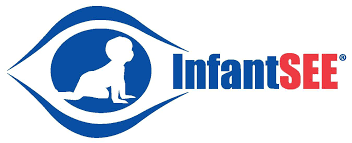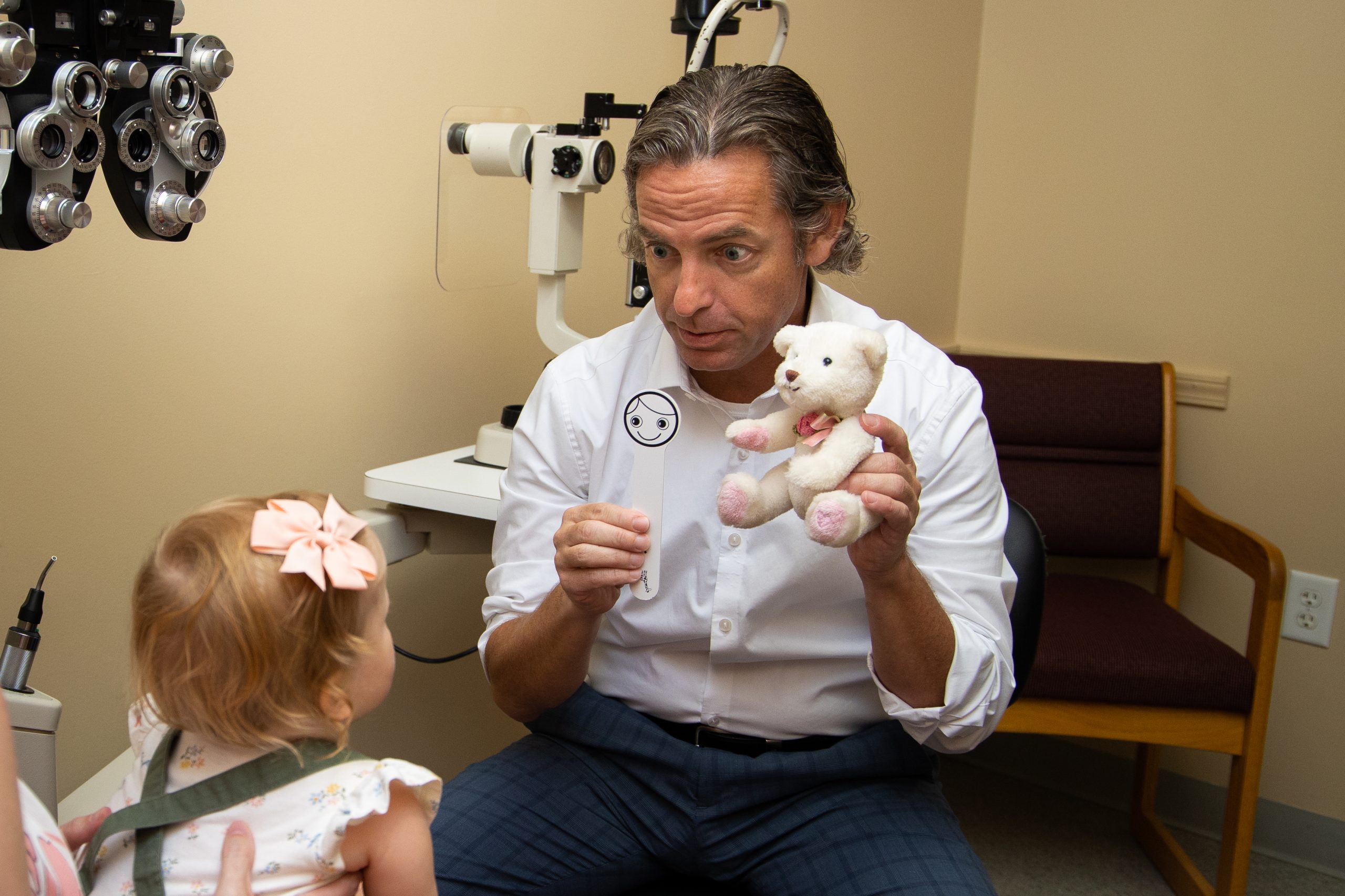DO YOU HAVE A CHILD 6 TO 12 MONTHS OF AGE?
DR. CASPER PROVIDES A COMPLIMENTARY OCULAR ASSESSMENT AS PART OF THE INFANTSEE PROGRAM
The InfantSEE® program is a first-of-its kind public health promotion through the American Optometric Association. This program offers a complimentary eye assessment to children of the age six to twelve months. Vision plays a major role in infant development, and any family history of eye disease or the need for any family member to wear glasses are excellent reasons to have your baby’s eyes examined.


Optometry’s Charity™
The AOA Foundation and The Vision Care Institute™, LLC a Johnson & Johnson company partnered to create InfantSEE®, a no-cost public health program developed to provide professional eye care for infants nationwide. Through InfantSEE®, Dr. Casper provides a one-time, eye assessment to infants in their first year of life, offering early detection of potential eye and vision problems at no cost regardless of income.




WHAT TO EXPECT AT THE ASSESSMENT:
During the assessment, parents might hold the baby on their laps or on a lap pillow and might also assist by holding targets or toys to hold the baby’s attention. Dr. Casper will gauge the babies’ comfort levels with specific techniques and adjust them as necessary, but will typically evaluate visual acuity, refraction, motility, alignment, binocularity and overall eye health. As detailed below, these tests will determine signs of strabismus, amblyopia or diseases of the eye.
•Visual Acuity/Refractive Status – Assessments for visual acuity and refraction are largely intended to measure for nearsightedness or farsightedness – common risk factors for amblyopia, which develops when an otherwise healthy eye has not received adequate use during early childhood. Nearsightedness or farsightedness in an infant’s developing eye can cause the brain to favor seeing through one eye, suppressing vision in the other eye, which can lead to permanent vision impairment.
Because the traditional eye chart with letters or symbols cannot be used with infants, assessment of visual acuity may include tests to ensure that the infant can fix his eyes on an object and follow it. Dr. Casper may also use lenses and light from a small hand-held instrument to assess how the eye responds to particular targets. In many cases, the infant may have some degree of refractive condition not requiring intervention.
•Ocular Motility/Alignment/Binocular Potential – Assessments for motility, alignment and binocularity can determine the presence of strabismus, which occurs when one eye does not aim at the same object as the other eye. Strabismus can lead to amblyopia, if undetected, or may indicate a number of ocular diseases.
These assessments also measure eye coordination, which is the ability of both eyes to work together as a team to create one three-dimensional image in the brain. Good eye coordination, a skill that is not innate and must be developed, keeps the eyes in alignment. Later in life, poor eye coordination can make reading for extended periods of time difficult and may result in avoidance of detail work, such as writing or art work, poor reading comprehension and clumsiness.
Using very simple instruments, such as penlights, finger puppets or toys, Dr. Casper tests the eye’s ability to move by getting the baby’s attention and observing how the baby follows the movements of the object. By shining a penlight toward the baby’s eyes, the doctor can gauge eye alignment, which is straight if the light is reflected in the center of both eyes.
•Overall Eye Health – Dr. Casper will assess the eye’s external structure as well as eyelids, tear ducts and other parts of the eye. Pupil function is then checked, followed by an assessment of the inner eye through dilated pupils, which can also detect ocular diseases such as retinoblastoma, the seventh most common pediatric cancer.
Following the assessment, in addition to sharing findings with the parents, Dr. Casper will send summary information to the infant’s pediatrician, family physician or other appropriate practitioners reporting and explaining any significant condition detected during the course of the assessment. Please keep in mind InfantSEE is an assessment program to detect ocular conditions. If your child is found to have a condition during the assessment that requires treatment and/or follow-up examinations, a full comprehensive ophthalmic examination can be performed.
For more information about InfantSEE®, refer to the website: www.infantsee.org